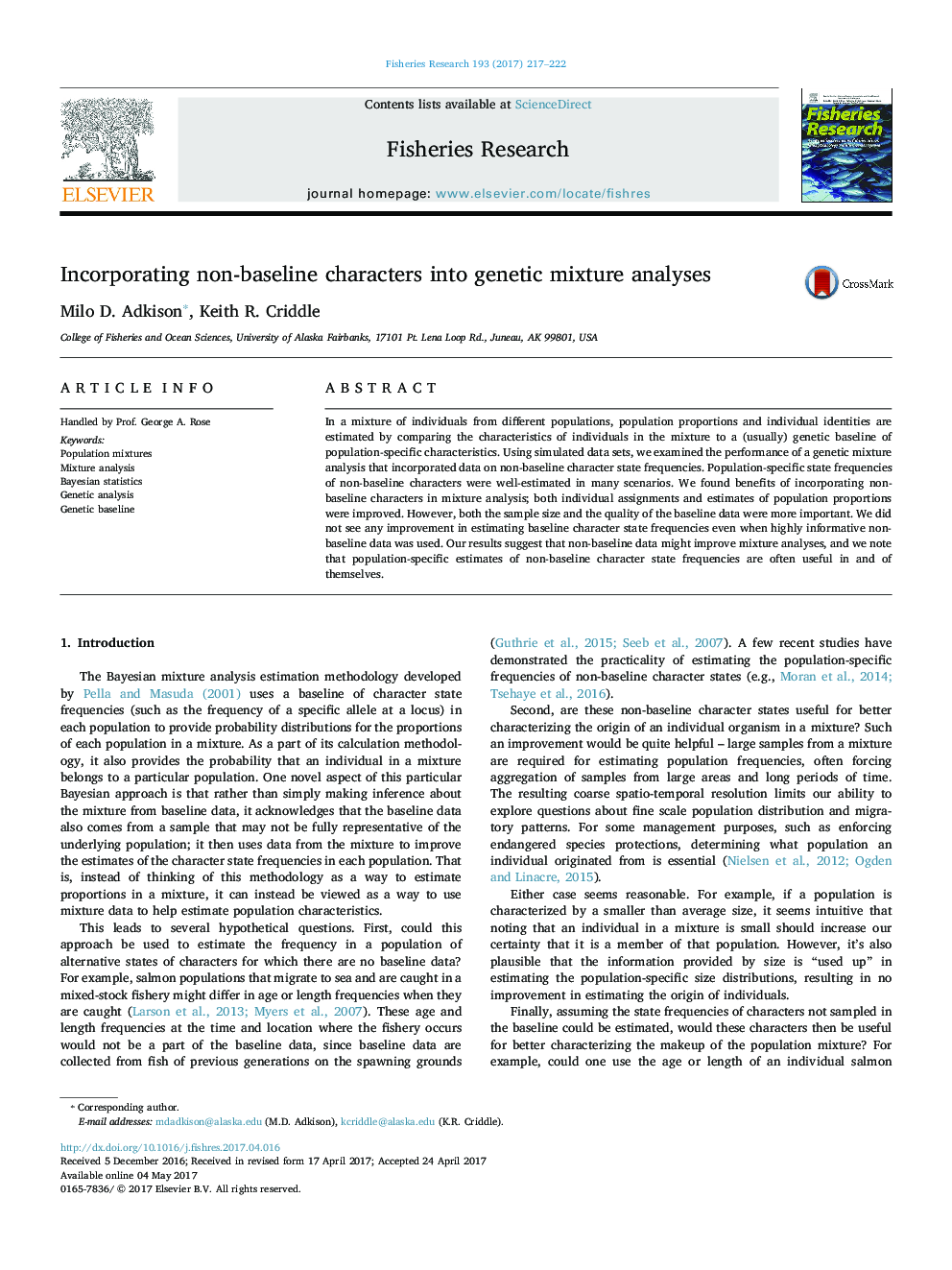| Article ID | Journal | Published Year | Pages | File Type |
|---|---|---|---|---|
| 5765490 | Fisheries Research | 2017 | 6 Pages |
â¢Population-specific differences in non-baseline characters can be estimated from a mixture.â¢Non-baseline characters only slightly improved estimates of population proportions in a mixture.â¢Non-baseline characters are more useful in assigning population identities to individuals.â¢Non-baseline characteristics may be useful in other ways; e.g., age and size is related to mortality.â¢Individual assignment allows better spatio-temporal resolution than mixture analysis.
In a mixture of individuals from different populations, population proportions and individual identities are estimated by comparing the characteristics of individuals in the mixture to a (usually) genetic baseline of population-specific characteristics. Using simulated data sets, we examined the performance of a genetic mixture analysis that incorporated data on non-baseline character state frequencies. Population-specific state frequencies of non-baseline characters were well-estimated in many scenarios. We found benefits of incorporating non-baseline characters in mixture analysis; both individual assignments and estimates of population proportions were improved. However, both the sample size and the quality of the baseline data were more important. We did not see any improvement in estimating baseline character state frequencies even when highly informative non-baseline data was used. Our results suggest that non-baseline data might improve mixture analyses, and we note that population-specific estimates of non-baseline character state frequencies are often useful in and of themselves.
